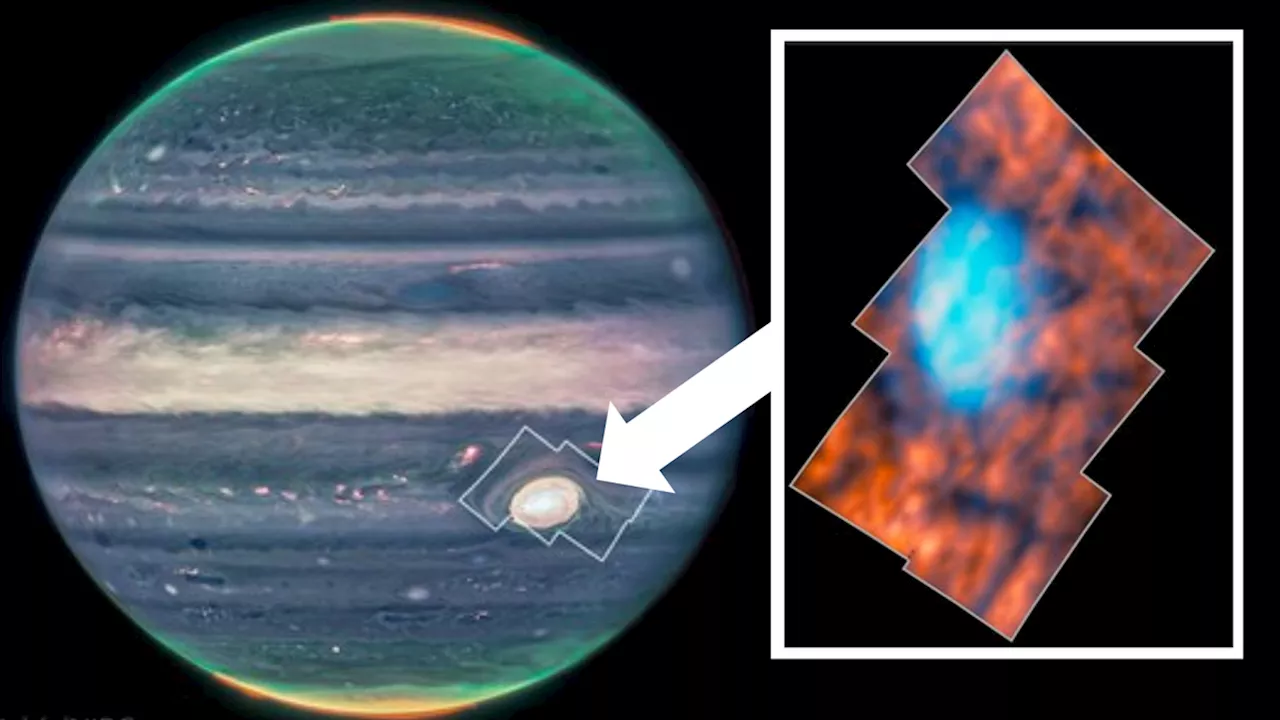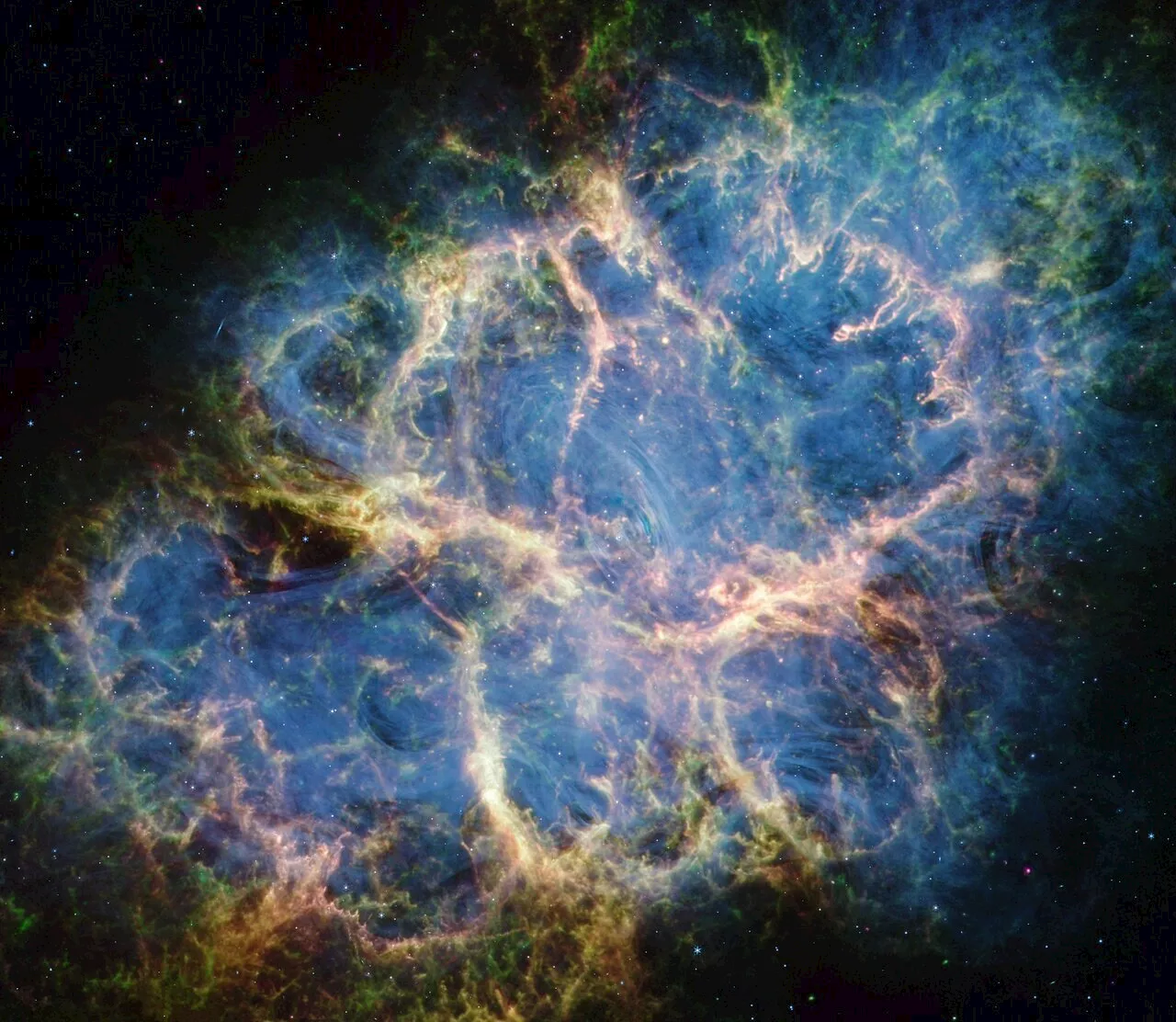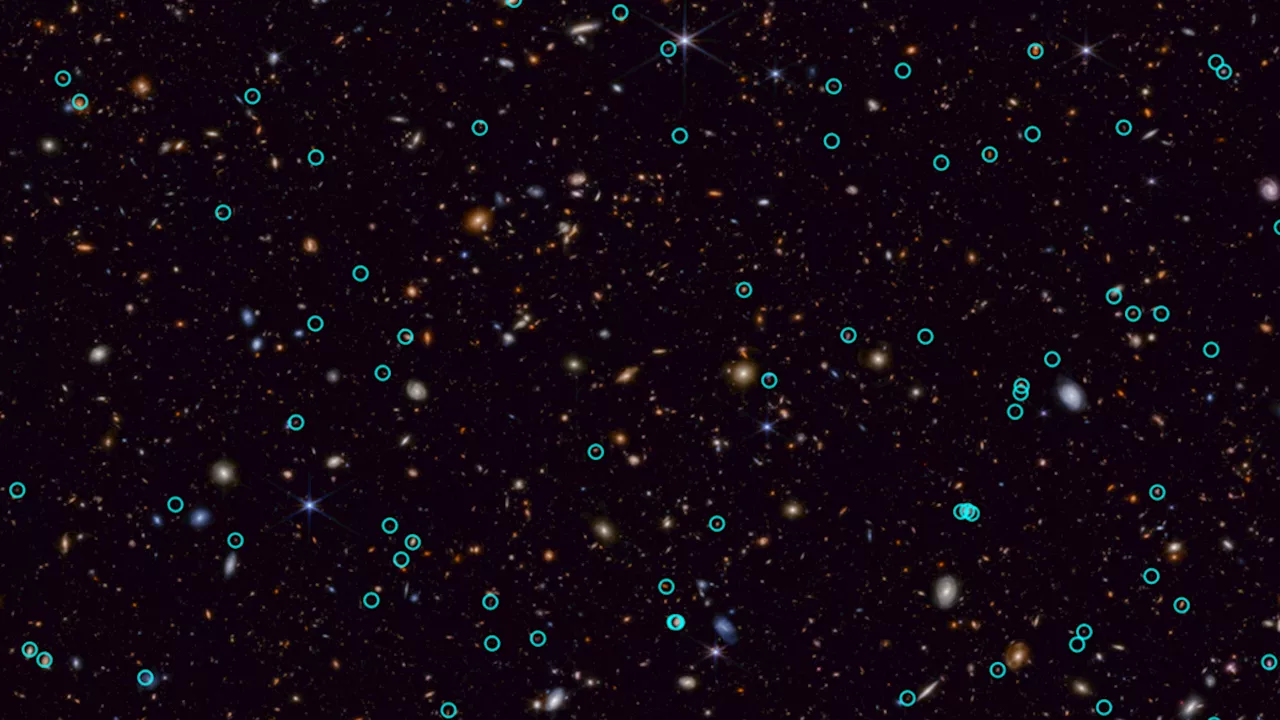A stunning new image from the James Webb Space Telescope shows a young star called a protostar and its outflows of dust and gas.
A stunning new image from the James Webb Space Telescope shows a young star called a protostar and the huge outflows of dust and gas that are thrown out as it consumes material from its surrounding cloud. This object has now been observed using two of Webb’s instruments: a previous version that was taken in the near-infrared with Webb’s NIRCam camera, and new data in the mid-infrared taken with Webb’s MIRI instrument.
Looking in the infrared portion of the electromagnetic spectrum allows researchers to see through clouds of dust that would be opaque in the visible light range, showing the interior structures of clouds like this one — named L1527. This image shows interior structures called filaments that are formed of compounds called polycyclic aromatic hydrocarbons and which are used to track star formation.
The NIRCam image looks very different because this wavelength shows mostly light that is reflected off the dust, while this new MIRI image shows the thickest pockets of dust. The MIRI image shows an area in white that is hard to see in the NIRCam image, which is a mixture of PAHs, ionized gas, and other material.
Recommended Videos “The combination of analyses from both the near-infrared and mid-infrared views reveal the overall behavior of this system, including how the central protostar is affecting the surrounding region,” Webb scientists explain. “Other stars in Taurus, the star-forming region where L1527 resides, are forming just like this, which could lead to other molecular clouds being disrupted and either preventing new stars from forming or catalyzing their development.
This beautiful sight won’t be around forever, though. Over time the protostar will continue to consume more material and push away the remnants of the molecular cloud it resides in. Then it will become a true star and will become visible in the visible light wavelength as well.
James Webb Space Telescope Space
United States Latest News, United States Headlines
Similar News:You can also read news stories similar to this one that we have collected from other news sources.
 James Webb Space Telescope spies strange shapes above Jupiter's Great Red Spot (image)Robert Lea is a science journalist in the U.K. whose articles have been published in Physics World, New Scientist, Astronomy Magazine, All About Space, Newsweek and ZME Science. He also writes about science communication for Elsevier and the European Journal of Physics. Rob holds a bachelor of science degree in physics and astronomy from the U.K.
James Webb Space Telescope spies strange shapes above Jupiter's Great Red Spot (image)Robert Lea is a science journalist in the U.K. whose articles have been published in Physics World, New Scientist, Astronomy Magazine, All About Space, Newsweek and ZME Science. He also writes about science communication for Elsevier and the European Journal of Physics. Rob holds a bachelor of science degree in physics and astronomy from the U.K.
Read more »
 James Webb Space Telescope spots 'Cosmic Gems' in the extremely early universe (video)Robert Lea is a science journalist in the U.K. whose articles have been published in Physics World, New Scientist, Astronomy Magazine, All About Space, Newsweek and ZME Science. He also writes about science communication for Elsevier and the European Journal of Physics. Rob holds a bachelor of science degree in physics and astronomy from the U.K.
James Webb Space Telescope spots 'Cosmic Gems' in the extremely early universe (video)Robert Lea is a science journalist in the U.K. whose articles have been published in Physics World, New Scientist, Astronomy Magazine, All About Space, Newsweek and ZME Science. He also writes about science communication for Elsevier and the European Journal of Physics. Rob holds a bachelor of science degree in physics and astronomy from the U.K.
Read more »
 James Webb Space Telescope spies never-before-seen star behavior in distant nebula (video, photo)Space.com contributing writer Stefanie Waldek is a self-taught space nerd and aviation geek who is passionate about all things spaceflight and astronomy.
James Webb Space Telescope spies never-before-seen star behavior in distant nebula (video, photo)Space.com contributing writer Stefanie Waldek is a self-taught space nerd and aviation geek who is passionate about all things spaceflight and astronomy.
Read more »
![]() Iconic Crab Nebula shines in gorgeous James Webb Space Telescope views (video, photo)Sharmila Kuthunur is a Seattle-based science journalist covering astronomy, astrophysics and space exploration. Follow her on X skuthunur.
Iconic Crab Nebula shines in gorgeous James Webb Space Telescope views (video, photo)Sharmila Kuthunur is a Seattle-based science journalist covering astronomy, astrophysics and space exploration. Follow her on X skuthunur.
Read more »
 Scientists investigate the origins of the Crab Nebula with James Webb Space TelescopeA team of scientists used the NASA/ESA/CSA James Webb Space Telescope to parse the composition of the Crab Nebula, a supernova remnant located 6,500 light-years away in the constellation Taurus.
Scientists investigate the origins of the Crab Nebula with James Webb Space TelescopeA team of scientists used the NASA/ESA/CSA James Webb Space Telescope to parse the composition of the Crab Nebula, a supernova remnant located 6,500 light-years away in the constellation Taurus.
Read more »
 'Supernova discovery machine' James Webb Space Telescope finds most distant star explosion on recordRobert Lea is a science journalist in the U.K. whose articles have been published in Physics World, New Scientist, Astronomy Magazine, All About Space, Newsweek and ZME Science. He also writes about science communication for Elsevier and the European Journal of Physics. Rob holds a bachelor of science degree in physics and astronomy from the U.K.
'Supernova discovery machine' James Webb Space Telescope finds most distant star explosion on recordRobert Lea is a science journalist in the U.K. whose articles have been published in Physics World, New Scientist, Astronomy Magazine, All About Space, Newsweek and ZME Science. He also writes about science communication for Elsevier and the European Journal of Physics. Rob holds a bachelor of science degree in physics and astronomy from the U.K.
Read more »
